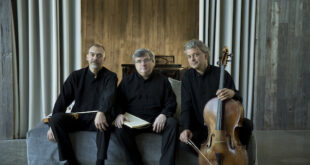
The Irishman enjoyed its world premiere at the 57th New York Film Festival. Critics have characterized the film as a gangster epic similar to Scorsese’s Goodfellas and Casino. Indeed, it sports direct narration and flashbacks in revealing the life of its protagonist. However, The Irishman diverges from the other films in its references to American history. First, it highlights our political, social, and economic history after WWII. Second, it focuses on how organized crime controlled the Teamsters union and its President, Jimmy Hoffa.
Specifically, Scorsese, with the superb screenplay by Steven Zaillian, unveils the life of Frank Sheeran, based upon Charles Brandt’s I Heard You Paint Houses. Organized crime bosses employed the euphemism “painting houses” as code for hits. As he killed, the fixer sprayed the blood and brains of his targets on the interior or exterior walls of buildings.

After hearing of Sheeran’s killing Germans during his military service in WWII, Pennsylvania mob boss Russell Bufalino recruits him. Scorsese chronicles Sheeran’s invaluable service to Bufalino accomplishing over 25 hits. Becoming Hoffa’s dear friend, he becomes a union activist and is in Hoffa’s service, but not in the same way. Because of Sheeran’s loyalty, Hoffa gives him the presidency of Sheeran’s local. Scorsese’s chronicle evolves from there and settles with Bufalino giving Sheeran the ring of a “made man.” Then the real tragedy begins.
Zaillian and Scorsese masterfully convert Brandt’s work into a profound, intricate biopic about Sheeran. Importantly, they focus on his relationships with Hoffa and Bufalino and his own family. Also, Scorsese emphasizes his alienation with his oldest daughter. As Sheeran’s conscience, she disapproves of what he does and condemns him. Because of her disassociation with him in his later life, Sheeran feels regret and remorse for his actions.

(courtesy of NYFF 2019)
Scorsese’s amazing epic of Americana after WWII startles, enthralls, mystifies, and teaches. Al Pacino gives the performance of a lifetime as the electrifying, charismatic, emotionally sizzling Hoffa. As a sterling, illuminating counterweight, Joe Pesci portrays Bufalino with the wisdom of a Roman patriarch, a Cato, a Cicero. Additional members of the ensemble shine: Bobby Cannavale, Harvey Keitel, and Anna Paquin. Finally, Ray Romano surprises; he’s just gobsmacking as the Bufalino’s staid consigliere.
In a brilliant contrast, Robert De Niro characterizes Sheeran “through a glass darkly.” With filtered emotion and cool steel, Sheeran moves with Spartan stoicism as a WWII veteran. Having made intimate friends with death, little bothers him. But where can he make his mark in a commercializing society that wants to forget the hell of war?

With subtlety Scorsese and Zaillian gradually reveal the “how” of Sheeran’s evolution. The killing machines of organized crime and American military parallel. With his affirmed loyalty and service learned under grueling pressure in the army, he continues. Bufalino’s gentle asks supplant the “other” orders he followed without question. In the greater society, he has found a home as a new type of soldier, necessary for a greater good: the working man.
As Scorsese asks questions about honor, loyalty, and the sanctity of life in his thematic threads, he bumps up against the culture of power. Who deserves power? How should the powerful be held accountable? What happens when the powerful refuse to compromise or listen to others in their sphere of influence? The questions resonate starkly for our time.

Surely, the Academy will nominate this film for Oscars awards – for individual performances, screenplay, direction, cinematography, and editing. One Oscar award the film deserves remains with the cinematography and state of the art digital effects. Incredibly, the stars now in their 70s de-age. Thanks to Industrial Light and Magic and CGI, a de-aged De Niro, Pesci, etc. populate half of the film.
This process of having the actors portray their younger selves cost millions and presented challenges. Indeed, cinematographers reminded the actors to move, not as 70-year-olds but as younger, vibrant, energized men. Thus, Pacino had to get up from a chair with vigor. Eventually he got it right, with laughs along the way.

Thelma Schoonmaker’s editing treasured by Scorsese rises to the level of complexity in the script yet maintains fluidity. As a result, the film moves from various iterations of the present to various scenes of the past with seamless clarity to record Sheeran’s evocation of the how and why he ends up feeling comfortable with the mob. This staircase storytelling crystallizes Scorsese’s scenes with economy. The seminal moments of decades transpire in minutes. Sharpened character traits and bare snippets cohere with extended scenes involving the complications of power and politics.
In short, The Irishman, with its combined efforts of genius artists, reflects like a unique gemstone faceted to strike in directed light the most stunning, unique colors. Look for its glorious release on Netflix in November.
 Blogcritics The critical lens on today's culture & entertainment
Blogcritics The critical lens on today's culture & entertainment




